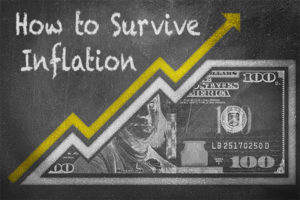Financial Literacy a Tough Test for Most Americans
The latest trends in spending and debt indicate that America already has forgotten any lessons we might have learned when the bubble burst on the U.S. economy in 2008.
The reputable and renowned Pew Charitable Trust says that 80% of American adults are in debt and the Federal Reserve Board says the amount we owe is growing.
Household debt, which includes mortgages, credit cards, student loans and different types of auto loans, climbed to $12.12 trillion at the end of 2015. That’s the highest debt level in five years and only 4.4% under the all-time high of $12.68 trillion that we owed just before the economy tanked in 2008.
At the same time, tests on America’s financial illiteracy — a lack of knowledge and understanding of how money works — gives us failing grades.
Only 60% of U.S. adults gave themselves an “A” or “B” grade on their knowledge of personal finance and 66% said they have not reviewed their credit scores or credit reports in the past year.
Seniors fared even worse. Just 2% received an “A” or “B” on a test given by the American College of Financial Services about how to make your nest egg last through retirement. In fact, 80% of seniors received failing grades (60% or lower) on the test.
The average score for high school students on a Financial Educators Council literacy test was just 60%. That is not surprising given how little financial discussion there is between parents and children and how few elementary or high schools offer classes in financial literacy.
Lost Lessons from 2008
None of that is good news, coming on the heels of the Pew Charitable Trust study that says nearly all Americans are in debt. Most of it is for mortgages ($8.2 trillion owed), but student loans ($1.23 trillion), auto loans ($1.06 trillion) and credit cards ($733 billion) have dragged 80% of American adults into the circle of debt.
Paul Golden, a spokesman for the National Endowment for Financial Education, said the teachable moments that helped educate a lot of people after the Great Recession of 2008 are quickly forgotten.
“Our surveys say that 40% of people are not happy at all with their financial lives,” Golden said. “Right after the downturn, people learned a lot about the real cost of credit cards and how interest rates impact your spending, but those lessons haven’t carried over the long term.
“We’re seeing a lot of the same factors that cause all recessions — low savings, high debt, soaring mortgage costs — and people aren’t paying attention. We definitely need to do more work with financial education at all levels.”
What Is Financial Literacy?
Financial literacy is defined as having enough knowledge and understanding of saving, borrowing, debt and investing to make financial decisions that will be in your best interests.
It comes into play on day-to-day things like managing your budget, using credit cards and whether a fixed-rate or variable-interest loan is more advantageous. It also affects long-term goals like deciding when to buy a home, how much to save for a college education, or where to invest for retirement.
The first big test of financial literacy for most people is acquiring a credit card or taking out a student loan. In both cases, misunderstanding the effect of compound interest rates and repayment obligations involved in using a credit card or accepting a student loan can lead to poor decisions that may ruin an individual’s credit score and opportunities for future use of credit.
For example, someone who regularly uses a credit card, but only makes minimum payments each month, racks up considerable debt in both principal and interest. The average credit card debt for people who carry a balance is $15,762. The average interest on credit cards that carry a balance is somewhere between 15% and 29%, meaning you can add an additional $646 to $1,252 to the bill every month just for interest charges.
That adds up quickly for the 34% of U.S. households that carry a balance from month-to-month.
The quickest detour out of credit card problems is debt consolidation. There are several options for consolidating debt, depending on the amount owed. If you have a manageable debt, say something under $3,000, a zero-interest balance transfer to another credit card might solve the problem.
If your credit card debt is higher – as it is for most people – a debt management program might be a better fix. Debt management programs help with budgeting and spread payments over a three to five-year plan.
Student Loan Debt a Major Problem
Similar problems exist with student loan debt. There are late fees when you miss a monthly payment. If you go more than 30 days, it can damage your credit score, making it difficult to obtain other lines of credit for a car loan or mortgage. If you are 270 days past due, the bank can demand full payment on the balance and any unpaid interest. There could also be collection fees of 16–25% and student loans can’t be discharged through bankruptcy.
The ultimate effect for defaulting on a student loan is that your credit is ruined and the debt — and debt collectors — will be chasing you the rest of your life.
“We’re finding that Millennials over borrow on student loans and don’t understand how that affects them later,” Golden said. “Their debt burden becomes so heavy they postpone things like marriage, starting a family and buying a home because those all add to their debt load. It’s not a good situation.”
Retirement savings is another area where people’s financial literacy is undergoing a severe test. More than 52% of households with people age 55 or older have zero savings for retirement. Those people obviously are counting on Social Security, but their average monthly Social Security check is just $1,335 per month or $16,020 a year. That is just barely above the federal poverty guidelines.
Timing of Education Important
The obvious solution would be for everyone to become better educated about personal finances. However, studies show even that is marginally effective.
A study by the National Endowment for Financial Education showed that teaching is most effective when it precedes a major financial decision. In other words, if you learn about credit card interest rates and payment penalties right before you get your first bill, you will understand the negative impact they have.
If not … well, you might forget what you learned and suffer the consequences.
With that in mind, Golden said it’s to your advantage to study all aspects of home mortgages, credit cards, auto loans, retirement and investing when it’s time to make a decision on them. The closer you match education to financial decision making, the better the chance you will make a good choice.
Even more importantly, once you feel comfortable with how money works in each of those areas, you should find ways to pass that knowledge along, especially to children. A recent survey showed that 33% of consumers said they primarily learned about finances from their parents. Another survey of high school students said learning about money management was very important and 80% wanted to learn more.
“There is no doubt that parents are the No. 1 influence on kids and have to be role models with their own financial behavior,” Golden said. “It’s best to start kids off managing their own bank account, then teach them about credit cards, auto loans and so on when it’s time appropriate.
“There is no need to talk about investing when the child is 16 years old and is only thinking about saving money to buy a car. Have discussions with your kids that aren’t lectures. Talk to them about setting a financial goal and what steps to take to achieve that goal.”
That would improve everyone’s financial literacy.
Sources:
- Kieffer, C., Lusardi, A., Mottola, G., Walsh, G., (2016), National Financial Capability Study, FINRA Education Foundation. Retrieved from http://www.usfinancialcapability.org/downloads/NFCS_2015_Report_Natl_Findings.pdf
- NA, (2015, November) Household Debt and Credit Report. Retrieved from New York Fed report: https://www.newyorkfed.org/medialibrary/interactives/householdcredit/data/pdf/HHDC_2015Q4.pdf
- Grant, K. (2015, April 2) Financial literacy: Not just a problem for students. Retrieved from http://www.cnbc.com/2015/04/02/financial-literacy-not-just-a-problem-for-students.html
- NA, (2014, December 3) Crash Course needed: Four Out Of Five Americans Fail When Quizzed On How To Make their Nest Eggs Last. Retried from http://www.theamericancollege.edu/ricp-retirement-income-survey/press-release.php
- Lynch, J., Fernandes, D., Netemeyer, R. (2013, June) How Literacy and Interventions Affect Financial Behaviors. Retrieved from http://www.nefe.org/Portals/0/WhatWeProvide/PrimaryResearch/PDF/Meta%20Analysis%20Singles%20March%2011.pdf
- Urahn, S., Plunkett, T., Currier, E., Lievestro, J., Elliott, D., Elmi, S., Key, C., Kypa, S., Lake, W., Sattelmeyer, S. (2015, July) The Complex Story of American Debt. Retrieved from http://www.pewtrusts.org/~/media/assets/2015/07/reach-of-debt-report_artfinal.pdf?la=en
- Lane, R. (2015, July 22) A Timeline of Federal Student Loan Delinquency, Default Consequences. Retrieved from http://www.usnews.com/education/blogs/student-loan-ranger/2015/07/22/a-timeline-of-federal-student-loan-delinquency-default-consequences
- Holmes, T., Ghahremani, Y. (2015, January) Credit card debt statistics. Retrieved from http://www.creditcards.com/credit-card-news/credit-card-debt-statistics-1276.php
- Kadlec, D. (2015, February 24) The High School Class That Makes People Richer. Retrieved from http://time.com/money/3718868/financial-education-study-wisconsin/
- You will need Adobe Reader to view the PDF Download Adobe Reader


















